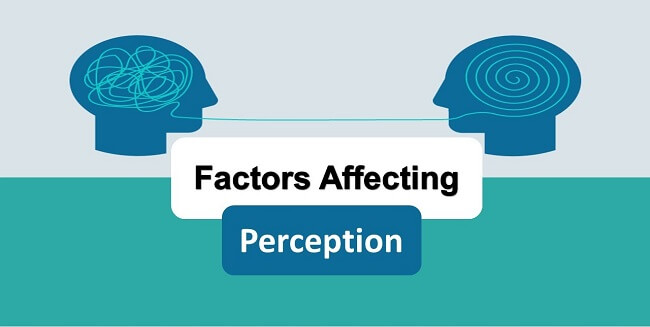A number of factors operate to shape and sometimes distort perception. These factors can reside in the perceiver, in the object or target being perceived, situation in the context of which the perception is made.
The Perceiver
When an individual looks at a target and attempts to interpret what he or she sees, that interpretation is heavily influenced by personal characteristics of the individual perceiver. Among the more relevant personal characteristic affecting perception are attitudes, motives, interests. expectations and past experiences. Unsatisfied needs or motives stimulate individuals and may exert a strong influence on their perceptions.
For Example:
The supervisor who has just been reprimanded by her boss for the high level of workers coming late among her staff is more likely to notice such behaviour by an employee tomorrow than she was last week. If you are preoccupied with a personal problem, you may find it hard to be attentive in the class. These examples illustrate that, the focus of our attention appears to be influenced by our interest and it differs considerably. What one-person notices in a situation can differ from what others perceive.
Just as interests narrow one’s focus, so do one’s past experiences. You perceive those things to which you can relate. However, in many incidences, your past experience will act to nullify objects interest. Objects or events that have never been experienced before are more noticeable than those that have been experienced in the past.
In late 1960s early l970s, women and minorities in managerial positions were highly visible because historically, those positions were the provinces of white males. Today women and minorities are more widely represented in the managerial ranks, so we are less likely to take notice that a manager is female.
Finally, expectations can destroy your perceptions so you will see that you expect to see. You expect a police officer to be authoritative, young people to be unambitious, Personnel directors to “like” people or individual holding public office to be unscrupulous, you may perceive them as such, regardless of their actual traits.
The Target
Characteristics of the target that is being observed can affect what is perceived. Loud people are more likely to be noticed in a group than quiet ones. Motions, sounds, size and other attributes of a target shape the way we see it
Because targets are not looked at in isolation from its background, the relationship of a target to its background influences perception, as does our tendency to group close things and similar things together. What we see depends on how we separate a figure from its general background.
Objects that are close to each other will tend to be perceived together rather than separately. As a result of physical or time proximity, we often put together objects or events that are unrelated. Persons, objects, or events that are similar to each other also tend to be grouped together.
The greater the similarity greater the probability that we will tend to perceive them as a common group. Women, blacks or members of any other group who have clearly distinguishable characteristics in terms of features or colors will tend to be perceived alike in other unrelated characteristics as well.
The Situation
The context in which we see objects or events is important. Elements in the surrounding environment influence our perception.
| Read More Topics |
| Organizational behaviour models |
| Force changing in HRM |
| Five sources of ethical standards |





